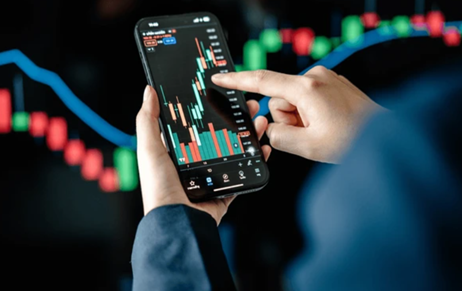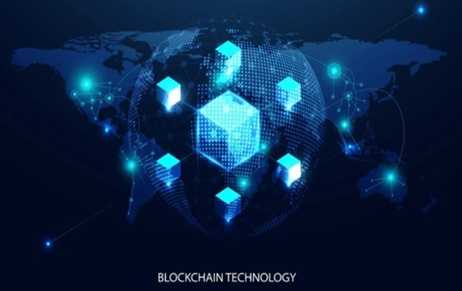The history of cryptocurrency and blockchain innovation makes a new history of unprecedented financial innovation.…
Rise of Blockchain and the Question of Patentability
1.Introduction
It started in 2008, when Satoshi Nakamoto came up with a ground-breaking idea of bitcoin and cryptographic proof that relies on CPU power to create immutable, tamper-proof ledgers which operate on a peer-to-peer architecture. Blockchain, was initially introduced only for Bitcoin and to ensure a consensus-based economic transaction, eradicating the need for a trusted third party. Recently, blockchain has seen wide application in the pharmaceutical sector, banking industry, energy industry, and where not![1]
To ensure compatibility of this technology with other industries, it becomes important to make suitable changes. However, it becomes pertinent to ask how far these changes align with the non-obviousness criteria essential to establish the patentability of the technology.[2] For any product or process to be patentable, it must have novelty, inventive step, and be capable of industrial application. Non-obviousness is an important component of inventive step and, therefore, raises concerns about the patentability of blockchains.[3] Also, this being a computer-related innovation, we cannot ignore Section 3(k) of the Act.[4]
With innovation pacing up and the introduction of blockchain in major spheres of life, applications for blockchains are also rapidly increasing. As of 2019, out of 112 applications published for blockchain, 39 are from Indian nationals.[5] With this, the patentability of blockchains gets highlighted as it will determine how innovation is shaped in the future.
In this article, the author would be diving into this question. After the introduction to the topic, the author will briefly discuss the applicability of blockchain in various industries and how each industry has modified blockchain as per its own needs. This will also help in explaining industry-specific benefits of blockchain. In the next part, the author will discuss the issue of patentability in light of Patents Act, 1970 (“the Act”), and then, finally conclude the article.
2. Application of Blockchain in Different Industries
2.1. Pharmaceutical Sector
The pharmaceutical sector is infested with counterfeits, which are a significant threat to public health and a blow to the credibility of medical establishments and pharmaceutical companies. Infosys has developed a blockchain pharma supply chain solution to this problem by allowing increased traceability from ‘source to shelf’.[6] Assigning medicines with a unique identification number and using technologies like a smart contract can help the end user verify the medicine’s authenticity. [7] Another way implemented to enable verification of authentic medicine is to integrate blockchain technology with a barcode, such that the end-user can scan the same to be assured of the authenticity of the product.[8] Also, if the company feels that a particular batch of products is defective or of substandard quality, it can recall the same much more efficiently and effectively with the help of blockchain technology. In the recall of products, blockchain makes the process expeditious by eradicating the need to get involved with Government agencies or other middlemen because they were never a part of the blockchain to begin with.[9]

2.2 Banking sector
Blockchain has the potential to revolutionize banking sector. Blockchain does away with the hassle of repeated physical verifications by ensuring that identity verification for one purpose can be safely reused. This advantage is attributed to blockchain creating an immutable database which assures that the reused information could not have been tampered with.[10]
Apart from speedy transactions due to the elimination of intermediaries, blockchain also allows the execution of smart contracts. These are computer programs that get executed automatically when the required conditions are fulfilled.[11] Therefore, there is no need to cross-verify that all the prerequisites for a particular contract are met, thus making the process more convenient.
Although cryptocurrencies like Bitcoin, for which blockchain was initially introduced, are not considered a legal tender in India, the potential of blockchain technology in Central Bank Digital Currencies (‘CBDCs’) is undeniable.[12]
2.3. Energy sector
These days, the burning issue around the energy sector is about attaining sustainable development goals.[13] Blockchain also provides a solution for this by allowing peer-to-peer energy transactions. BSES Rajdhani Power Ltd., a leading distribution company in Delhi, has also started a pilot project in Dwarka by integrating blockchain technology into its operations.[14] Some individuals generate their own solar energy, and sometimes, the surplus generated spills back to the main grid, affecting its performance. The company partnered with Power Ledger to introduce blockchain to solve this issue. The individuals generating excess rooftop solar energy can now sell it to their neighbours. This would make solar energy available much cheaper, making it a more cost-efficient alternative than conventional energy sources.[15]
3. Lens of the Patent Act, 1970
For any product or process to be eligible for a patent, it must have an inventive step, which is defined under Section 2(1)(ja) of the Act as,[16]
“…a feature of an invention that involves technical advance as compared to the existing knowledge or having economic significance or both and that makes the invention not obvious to a person skilled in the art”
When looking at blockchain’s use in different industries, its very base lies in Satoshi Nakamoto’s paper. Any invention with no significant changes will drag in the question of non-obviousness. Since different blockchain inventions are based on the blockchain technology devised in Satoshi Nakamoto’s paper, we land in doubt whether blockchain inventions fulfill the criterion of inventive step.[17] Moreover, mosaicing is permissible in the inventive step, which makes it more difficult for a blockchain to be eligible for a patent.
The author does not say that none of the blockchain technology can be patented. In fact, patents have been granted to blockchains in various jurisdictions, while in India, the stance is still unclear.[18],[19],[20] While deciding on the fulfilment of inventive step, it is important to take care of hindsight bias, which occurs when an invention appears to be obvious after it has been known.[21] So, the current stance is that patents are granted to blockchains if they pass the criteria of novelty, inventive step and industrial application.
We also must consider the implications of Section 3(k) of the Act, which poses a hurdle in determining the patentability of blockchain-related inventions.[22] This Section excludes “a mathematical or business method or a computer programme per se or algorithms” from the ambit of patentability. In short, generally speaking, computer-related inventions could not be patented by virtue of Section 3(k) of the Act.[23]
However, the word “per se” gets hopes high when discussing computer-related inventions’ patentability. In the recent case of Ab Initio Technology LLC,[24] the Delhi High Court reiterated that computer programmes that enhance technical effects could be patented. Even in the case of Microsoft Technology Licensing, LLC v. Assistant Controller of Patents and Designs,[25] the Delhi High Court has observed that computer programmes that lead to technical advancement could be patented. Since blockchains are computer-related inventions and analogous to computer programmes, the same logic could be applied to them. It would not be wrong to argue that blockchains that enhance technical effects should be granted patent.
4. Conclusion
In this article, we see that blockchain has a plethora of advantages across industries, and this adds to the need to proliferate and promote such technologies. This could only happen if blockchains are granted patents, which would assure the inventor, who has expended his hard work and resources, that he will enjoy a monopoly over his invention and be able to reap benefits.
However, in Indian jurisdiction, the stance on this issue is unclear. This article has discussed the use of blockchains in different industries, discussed concerns around non-obviousness, computer-related inventions and has concluded that blockchains can be granted patents, given that they satisfy the criteria of novelty, inventive step and industrial application and lead to enhanced technical effect.
Author: Dev Astha, a Student at Indian Institute of Management Rohtak, in case of any queries please contact/write back to us via email to chhavi@khuranaandkhurana.com or at IIPRD.
[1] Mohd Javaid, Abid Haleem, Ravi Pratap Singh, Shahbaz Khan, Rajiv Suman, ‘Blockchain technology applications for Industry 4.0: A literature-based review’ (2021) 2(4) BCRA <https://doi.org/10.1016/j.bcra.2021.100027> accessed 21 October 2024
[2] Patents Act 1970, s 2(1)(ja)
[3] Patents Act 1970, s 2(1)(ja)
[4] Patents Act 1970, s 3(k)
[5] BP Singh and Anand Kumar Tripathi, ‘Blockchain Technology and Intellectual Property Rights’ (2019) 24 JIPR <https://nopr.niscpr.res.in/bitstream/123456789/49934/1/JIPR%2024%281-2%29%2041-44.pdf > accessed 21 October 2024
[6] Infosys, ‘Infosys Blockchain Pharma Supply Chain Solution’ (Infosys Insights) <https://www.infosys.com/services/blockchain/insights/pharma-supply-chain-solution.html> accessed 21 October 2024
[7] Nazik Zakari, Muna Al-Razgan, Amani Alsaadi, Haya Alshareef, Heba Al saigh, Lamia Alashaikh, Mala Alharbi, Rana Alomar, Seham Alotaibi, ‘Blockchain technology in the pharmaceutical industry: a systematic review’ (2022) PeerJ Comput Sci. <https://pmc.ncbi.nlm.nih.gov/articles/PMC9137953/> accessed 22 October 2024
[8] Anuja Kokate, Shivanjali Phalke, Siddhi Kekan, Prof. Sanjay Ranveer, “Identifying Fake Products through a Barcode based Blockchain System” (2024)12(4) IJRASET <https://doi.org/10.22214/ijraset.2024.59904> accessed 22 October 2024
[9] Xuanping Wu, Yanjun Lin, ‘Blockchain recall management in pharmaceutical industry’ (2019) 83 PROCIRP <https://doi.org/10.1016/j.procir.2019.04.094> accessed 22 October 2024
[10] DBS, ‘Blockchain technology: transforming the future of banking’ (DBS Technology of the Future, 18 April 2023) <https://www.dbs.com/blockchain/blockchain-technology-transforming-the-future-of-banking.html> accessed 22 October 2024
[11] Shafaq Naheed Khan, Faiza Loukil, Chirine Ghedira-Guegan, Elhadj Benkhelifa and Anoud Bani-Hani, ‘Blockchain smart contracts: Applications, challenges, and future trends’ (2021) 14 Peer-to-Peer Netw. Appl. <https://link.springer.com/article/10.1007/s12083-021-01127-0> accessed 22 October 2024
[12] Arvind Ravichandran, Christopher Fargo, David Kappos, David Portilla, John Buretta, Minh Van Ngo, Sasha Rosenthal-Larrea, Cravath, ‘Blockchain in the Banking Sector: A Review of the Landscape and Opportunities’ (Harvard Law School Forum on Corporate Governance, 22 October 2024) <https://corpgov.law.harvard.edu/2022/01/28/blockchain-in-the-banking-sector-a-review-of-the-landscape-and-opportunities/> accessed 22 October 2024
[13]Xunzhang Pan, Tianming Shao, Xinzhu Zheng, Yanru Zhang, Xueqing Ma, Qi Zhang ‘Energy and sustainable development nexus: A review’ (2023) 47 ESR <https://doi.org/10.1016/j.esr.2023.101078> accessed 22 October 2024
[14] BSES, ‘BSES One Of The First Discom in India To Launch Block Chain Technology Platform’ (BSES Press Release, 13 November 2019) <https://www.bsesdelhi.com/documents/55701/1190197189/Blockchain_November_13_Eng.pdf> accessed 22 October 2024
[15] Ibid
[16] Patents Act 1970, s 2(1)(ja)
[17] Patents Act 1970, s 2(1)(ja)
[18] Supra 5
[19] Yen Vu, Duong Vu and Tin Nguyen, ‘Clarifying the Patentability of Cryptocurrency Inventions for Jurisdictions’ (2021) Rouse <https://rouse.com/media/rt3opqwv/vietnam-clarifying-the-patentability-of-cryptocurrency-inventions-for-a-jurisdiction.pdf> accessed 23 October 2024
[20] Frank L. Gerratana and Siddharth Bhardwaj, ‘Is Your Blockchain Invention Patentable?’ (Mintz, 2024) <https://www.mintz.com/insights-center/viewpoints/2231/2024-05-29-your-blockchain-invention-patentable> accessed 23 October 2024
[21]Sivakami Dhulap, M G Kulkarni, ‘Avoiding hindsight in non-obviousness determination: case law review of pharmaceutical patents and guidance from the KSR v Teleflex decision’ (2021) 31(10) Expert Opin Ther Pat. <https://pubmed.ncbi.nlm.nih.gov/33993810/#:~:text=Introduction%3A%20Hindsight%20bias%20is%20the,often%20subjected%20to%20hindsight%20bias> accessed 23 October 2024
[22] Patents Act 1970, s 3(k)
[23] Patents Act 1970, s 3(k)
[24] Ab Initio Technology LLC v Assistant Controller of Patent and Designs [2024] DHC:5708
[25] Microsoft Technology Licensing, LLC v. Assistant Controller of Patents and Designs [2023] DHC:3342



